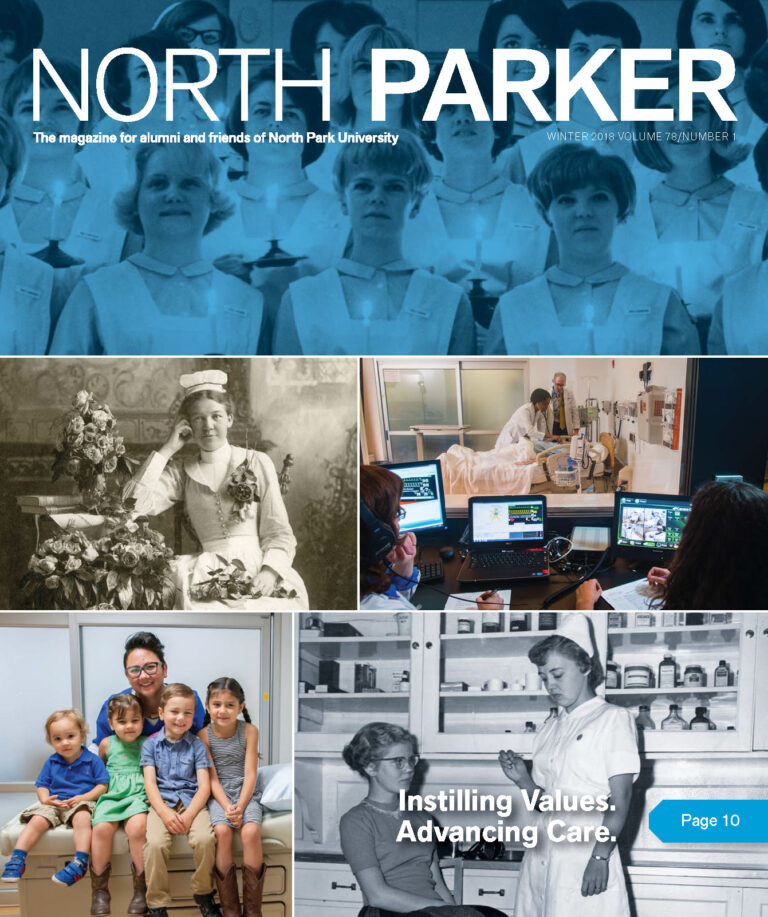 Students gather around the metal table as Visiting Assistant Professor of Biology Lindsey Alexander unzips a large body bag, carefully peeling back a sheet to reveal an arm. Gently parting the skin, Dr. Alexander points to various muscles as the anatomy students try to identify them.
Students gather around the metal table as Visiting Assistant Professor of Biology Lindsey Alexander unzips a large body bag, carefully peeling back a sheet to reveal an arm. Gently parting the skin, Dr. Alexander points to various muscles as the anatomy students try to identify them.
“Bicep?” says one student.
“Flexors?” guesses another.
It’s just another day in ��ݮӰ��’s Cadaver Lab, located in the lower level of the Nancy and G. Timothy Johnson Center for Science and Community Life. At the center of the lab are two cadavers, or donors, as they are known here as a sign of respect. One is a 75-year-old man who died of congestive heart failure, the other a woman in her 60s whose cause of death is unknown.
Today, the learning began at 6:30 a.m., as it does each Tuesday and Wednesday, when Dr. Jeffrey Nelson opens the lab to any interested students or staff who sign up ahead of time. Instead of a formal class, Dr. Nelson reserves this time to show off the lab to those who wouldn’t normally use it or have classes there.
“It’s magical,” says Dr. Nelson, a biology professor who runs the lab. “With dissecting, there’s nothing like doing it yourself. No book, no fancy technology, nothing is ever going to replace finding, on your own, a cancer or a coronary bypass, like our male donor has.”
What’s even more valuable, says Dr. Nelson, is the camaraderie that forms among the students as they work around a body.
“The other day, we had three young women in here talking and just really learning from each other in a way that doesn’t happen in most classrooms,” Dr. Nelson says.
And the cadaver lab isn’t just for health sciences students. Nelson says art professors have used the donors to teach drawing. “The students might study Michelangelo. Then they come here and see the real thing, and they might end up drawing it a little different than before,” Nelson says.
Nelson also has invited students from nearby high schools such as Von Steuben and Northside College Prep into the lab. “We’re not the only university to have a cadaver lab,” says Nelson, “But the access we allow is not typical.” In addition, ��ݮӰ�� students have more opportunities to actually dissect bodies, as opposed to schools where donor bodies arrive already cut open.
“Our female donor has a hip scar. I can’t wait for these kids to begin the dissection and see an artificial hip,” says Nelson, who also teaches at Rush University Medical Center, a connection that provides a pipeline to donor bodies that are not dissected.
The bodies often last for several years because of the special care Dr. Nelson takes to preserve them, covering them with dampened microfiber cloths after each session.
Dr. Nelson sees the lab as one of NPU’s most valuable new assets. “This is the way to learn, period,” he says, referring to the open, collaborative feeling in the lab. “Not just about anatomy, but about everything.”


